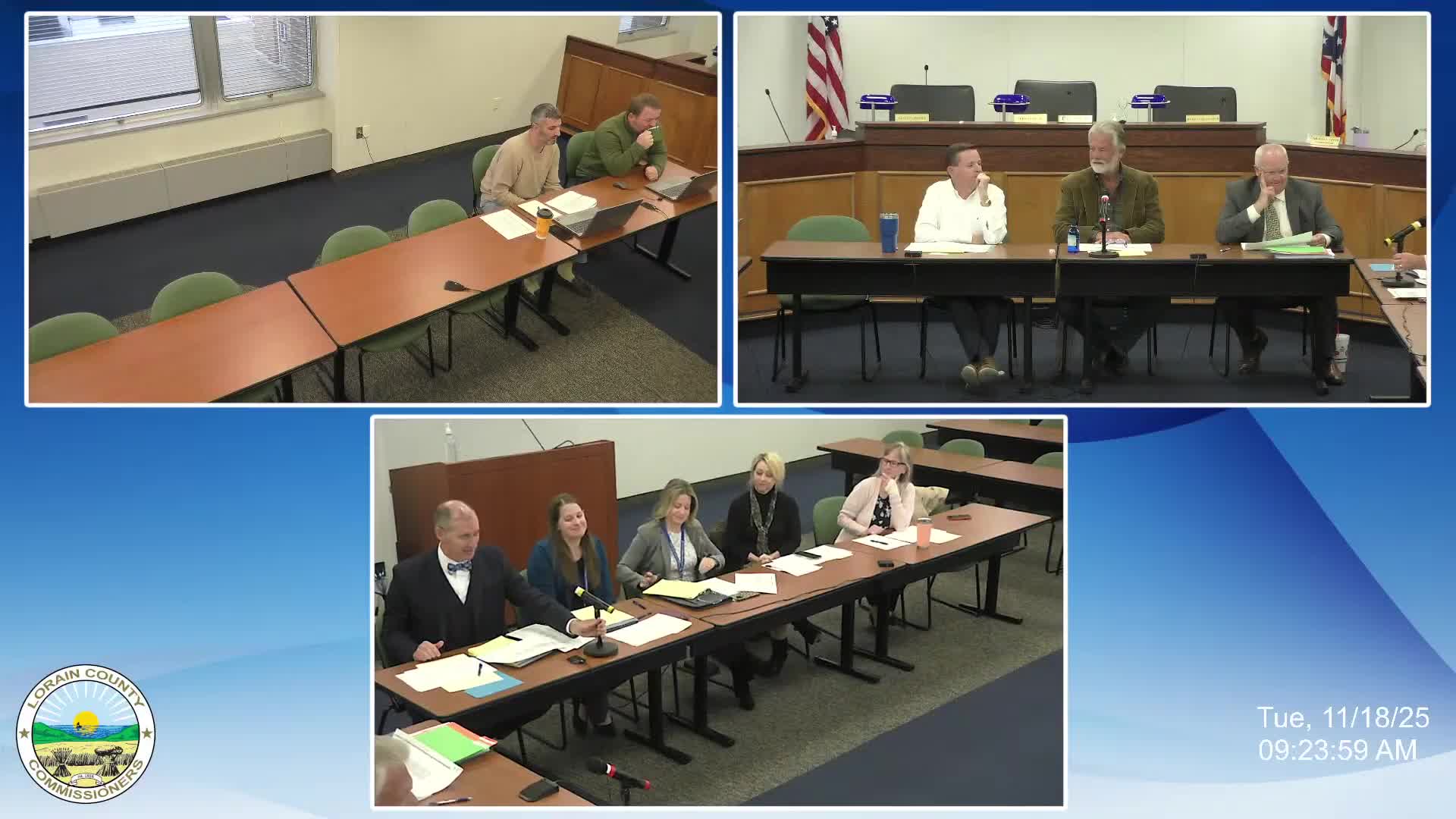Lorain County judges warn detention overcrowding and mental-health mandates are driving juvenile budget increases
November 19, 2025 | Lorain County, Ohio

This article was created by AI summarizing key points discussed. AI makes mistakes, so for full details and context, please refer to the video of the full meeting. Please report any errors so we can fix them. Report an error »

At a Nov. 18 budget work session, judges from the Lorain County domestic relations and juvenile courts told county commissioners that mounting detention costs and new mental-health procedures have pushed their tax-budget request higher and constrained opportunities for cuts.
"Our detention home for the juvenile delinquents in Lorain County was built in 1957," Administrative Judge Frank Janek said, listing age-related maintenance and staffing needs as central drivers of increased spending. Court administrators said the facility has 28 cells for males but has often held more than 28 juveniles, forcing some youths to sleep in day rooms and requiring additional staff and overtime.
Court administrator Emily Kirsch said those constraints led the court to add four juvenile detention officer (JDO) positions this year. Kirsch described longer hospital stays and staffing demands under a statewide shift to mobile response and stabilization services (MRSS): when a youth is hospitalized for psychiatric care, two officers must accompany the juvenile and placements can take several days, removing staff from the detention home.
Judge Sherry Glass and other judges said the court uses a Detention Screening Instrument (DSI) that was adjusted in response to local trends, including increased incidents of juveniles working in groups to steal vehicles and using weapons. "We have the screening tool, and that's what we go through when we are admitting juveniles," Glass said, adding that the DSI and public-safety considerations limit the court’s discretion to drastically cut detention staffing without risking safety.
Judges emphasized they are seeking efficiencies rather than deep cuts. "We want to centralize with the commission. We are open to those ideas," one judge said, noting the court eliminated an HR position previously and participates in cross-training opportunities. Court staff also highlighted diversion resources: Turning Point Shelter, a short-term residential facility contracted at $130,000 for placements, and an assessment-diversion center funded in past years with roughly $425,000 in grant money to triage cases and keep youth out of detention when appropriate.
Commissioners and judges agreed to continue line-by-line budget reviews. The judges also told the board they applied for a $28 million grant this year to build a new detention home; the application is pending and, if awarded, could reduce pressure on the general fund. Commissioners said their goal is to keep countywide spending near the prior year’s level (about $86 million) and explore shared IT and HR services to trim costs without cutting mandated public-safety functions.
Next steps: judges and court fiscal staff will work with commissioners on detailed budget adjustments and provide updated projections during the tax-budget process in spring 2026.
"Our detention home for the juvenile delinquents in Lorain County was built in 1957," Administrative Judge Frank Janek said, listing age-related maintenance and staffing needs as central drivers of increased spending. Court administrators said the facility has 28 cells for males but has often held more than 28 juveniles, forcing some youths to sleep in day rooms and requiring additional staff and overtime.
Court administrator Emily Kirsch said those constraints led the court to add four juvenile detention officer (JDO) positions this year. Kirsch described longer hospital stays and staffing demands under a statewide shift to mobile response and stabilization services (MRSS): when a youth is hospitalized for psychiatric care, two officers must accompany the juvenile and placements can take several days, removing staff from the detention home.
Judge Sherry Glass and other judges said the court uses a Detention Screening Instrument (DSI) that was adjusted in response to local trends, including increased incidents of juveniles working in groups to steal vehicles and using weapons. "We have the screening tool, and that's what we go through when we are admitting juveniles," Glass said, adding that the DSI and public-safety considerations limit the court’s discretion to drastically cut detention staffing without risking safety.
Judges emphasized they are seeking efficiencies rather than deep cuts. "We want to centralize with the commission. We are open to those ideas," one judge said, noting the court eliminated an HR position previously and participates in cross-training opportunities. Court staff also highlighted diversion resources: Turning Point Shelter, a short-term residential facility contracted at $130,000 for placements, and an assessment-diversion center funded in past years with roughly $425,000 in grant money to triage cases and keep youth out of detention when appropriate.
Commissioners and judges agreed to continue line-by-line budget reviews. The judges also told the board they applied for a $28 million grant this year to build a new detention home; the application is pending and, if awarded, could reduce pressure on the general fund. Commissioners said their goal is to keep countywide spending near the prior year’s level (about $86 million) and explore shared IT and HR services to trim costs without cutting mandated public-safety functions.
Next steps: judges and court fiscal staff will work with commissioners on detailed budget adjustments and provide updated projections during the tax-budget process in spring 2026.
View full meeting
This article is based on a recent meeting—watch the full video and explore the complete transcript for deeper insights into the discussion.
View full meeting
